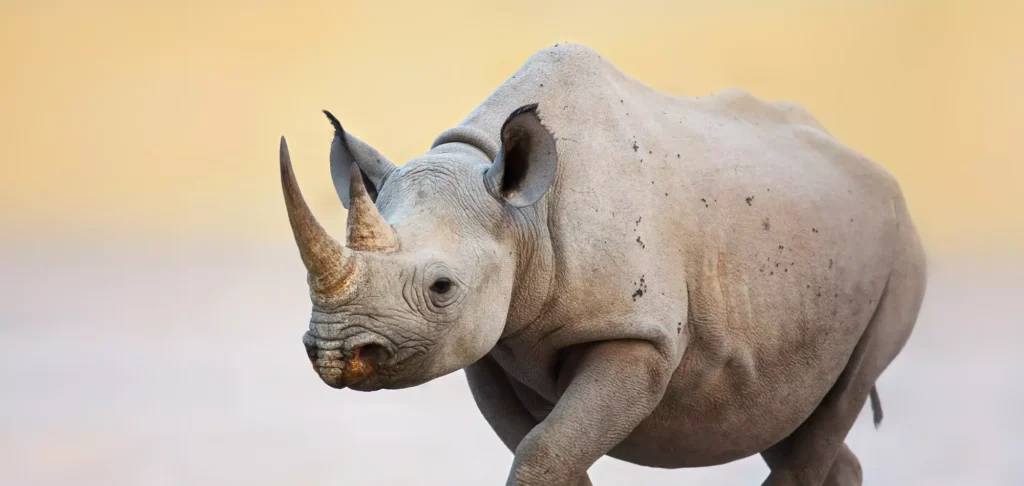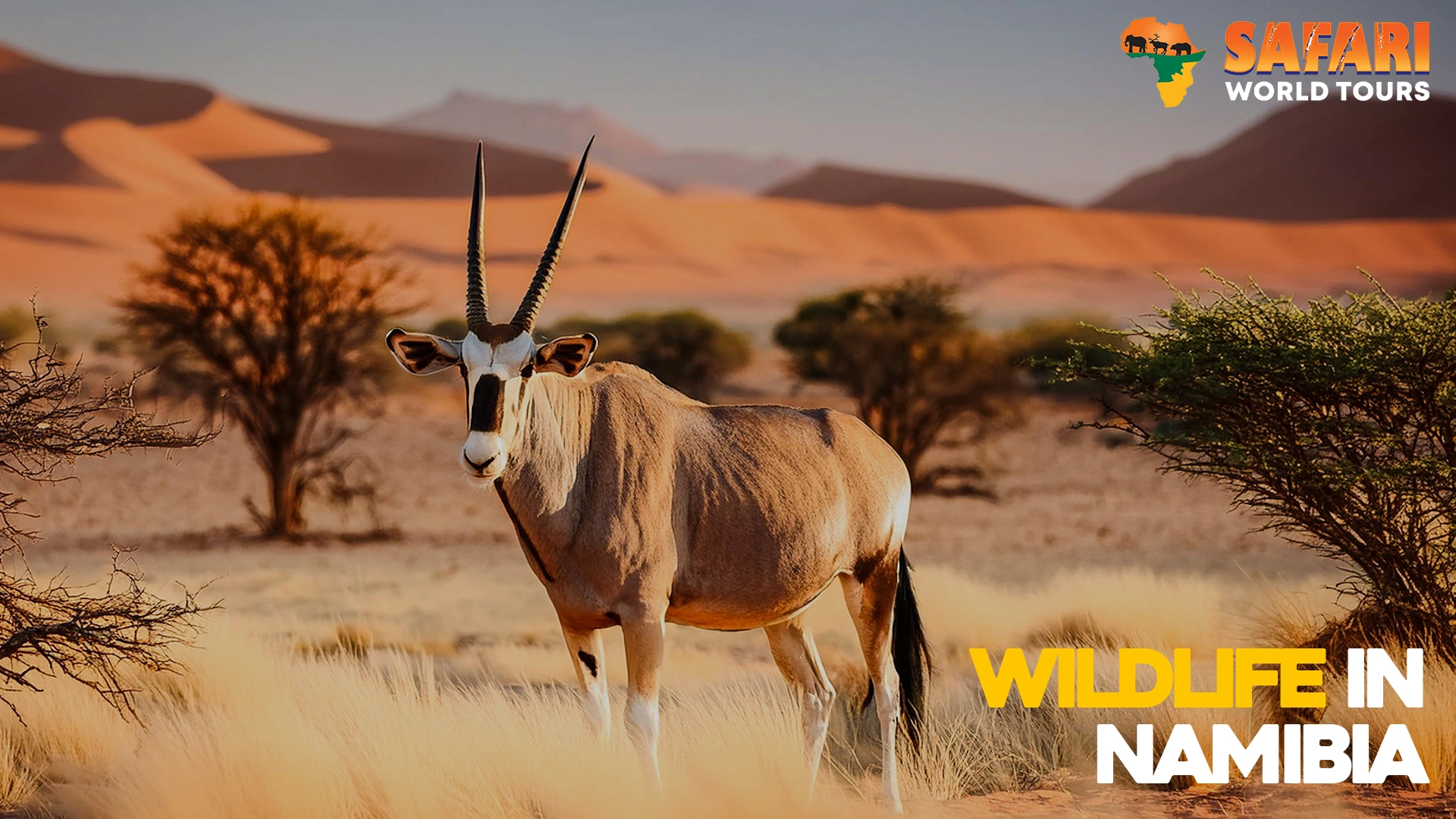It is common to refer to Namibia as a nation of contrasts, and the country’s wildlife certainly lives up to this reputation. If you go to Namibia, you will see a landscape that is almost completely untouched and isolated.
First impressions are often of a scorching and rather harsh terrain, but as you travel around Namibia, you will be mesmerized by the unique adaptations that the local species have created to survive in these circumstances Wildlife in Namibia.

Wildlife in Etosha National Park
Etosha National Park is the finest place to go if you want to view the wildlife of Namibia in all of its splendor. Therefore, you shouldn’t miss it.
The reserve, which was first designated as a game reserve in 1907 by Governor Fredrich Von Lindequist, is not only the biggest in Namibia but also one of the largest in Africa, spanning an astounding 2.27 million hectares. The section is home to several indigenous species, such as the Black-faced Impala and the Damara Dik Dik, in addition to the “Big Five” of Africa.
Etosha National Park, located in the country’s north, is regarded as Namibia’s premier place for seeing wildlife. When there is less water available, the park’s animals congregate around the waterholes, which makes it simple to observe wildlife if you park your vehicle in the appropriate location Wildlife in Namibia.
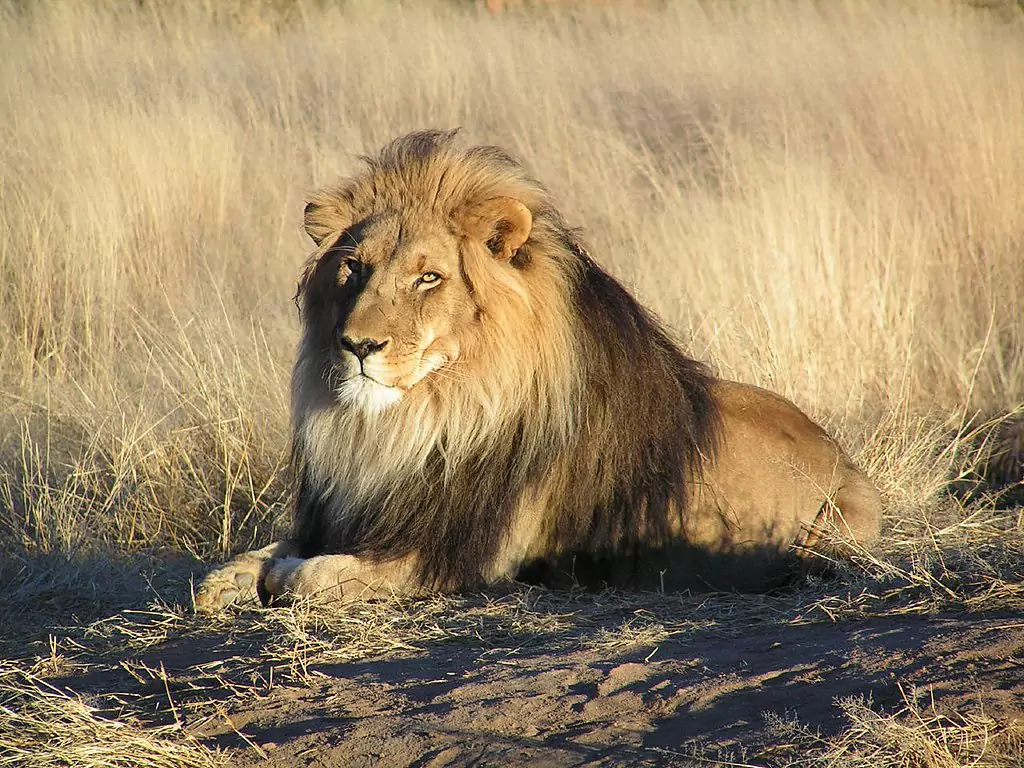
There will be plenty of elephants and lions, and if you’re fortunate, you could even spot a cheetah. You’ll also witness herds of springbok, zebra, and blue wildebeest. In addition, you will get the opportunity to witness species native to the desert, such as the oryx, meerkat, ostrich, and bat-eared foxes.
The park is the greatest area in Africa to see black rhinos, and it’s also home to two other unique species: the black-faced impala and the Damara dik-dik. Both of these animals can only be found in one other location, which is Angola, which is just over the border of Wildlife in Namibia.
Etosha National Park
The name Etosha may be translated as meaning “place of mirages,” “place of dry water,” or “great white expanse.” Even to this day, the majority of game-watching in the region is focused on Etosha Pan. Okaukuejo, Namutoni, and Halali are the names of the three lodges that belong to Namibia Wildlife Resorts, which is the name of the wildlife agency that is controlled by the Namibian government Wildlife in Namibia.
Etosha National Park. The floodlit waterhole at Okaukeujo, which is frequented by black rhinos, elephants, and lions, is one of the park’s most famous features. Etosha National Park is surrounded by several private reserves, including the Onguma Private Game Reserve and the Ongava Private Game Reserve, all of which are located nearby.
One of the benefits of visiting these areas is the opportunity to see the local fauna not only on foot but also at night Wildlife in Namibia.
Wildlife in North-west Namibia
Free-roaming populations of desert elephants are very uncommon. Mali is the only other area in the globe where they are available, as well as desert-adapted black rhinos and lions, may be found in the steep highlands of Damaraland, which is located in the northwest of Namibia.
Tracking black rhinos and elephants across Namibia’s stunning desert landscapes is one of the most rewarding wildlife experiences the country has to offer Wildlife in Namibia.
Wildlife in the North-east of Namibia
The Zambezi Region, which was once known as the Caprivi Strip and is located in the extreme north-eastern part of Namibia, provides a unique wildlife experience in comparison to the rest of the nation as a result of the substantial summer rains, rivers, and other water sources.
It is in this region that you will be able to witness hippos and crocodiles. It is also where buffalo is available. One of the most stirring things to do in the Zambezi Region is to watch the animals from the water, either from a boat or from a mokoro Wildlife in Namibia.
Western Namibia
Seals, whales, and dolphins are some of the marine mammals that may be seen in the western region of Namibia on boating and kayaking excursions that depart from Walvis Bay Wildlife in Namibia.
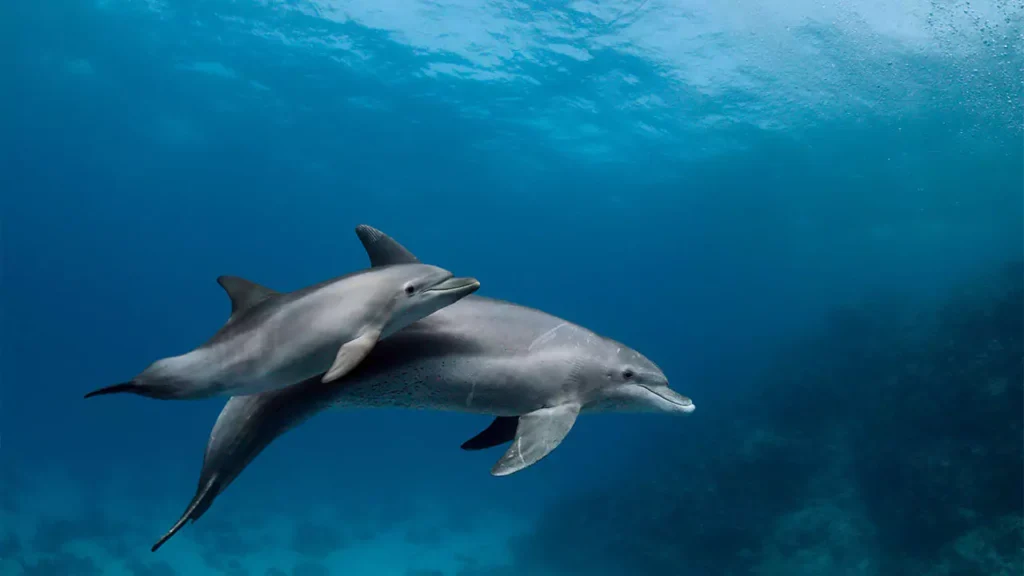
Wildlife in Northern Coastline
The Cape Cross Seal Reserve is located in the Skeleton Coast National Park. There is one of the major breeding colonies of Cape Fur seals anywhere in the world. This colony may be found in the northernmost part of Wildlife in Namibia.
The area is home to over 100,000 seals throughout the year, and if you go to the reserve in November and December, you’ll be able to observe their newborn puppies, in addition to the possibility of seeing a jackal prowling around Wildlife in Namibia.
Wildlife in Eastern Namibia
Search for cheetahs and leopards in Okonjima Nature Reserve near Otjiwarongo. Track rare and highly elusive pangolins at Erindi Private Game Reserve. Central Namibia also offers two areas where animal tracking may be done Wildlife in Namibia.
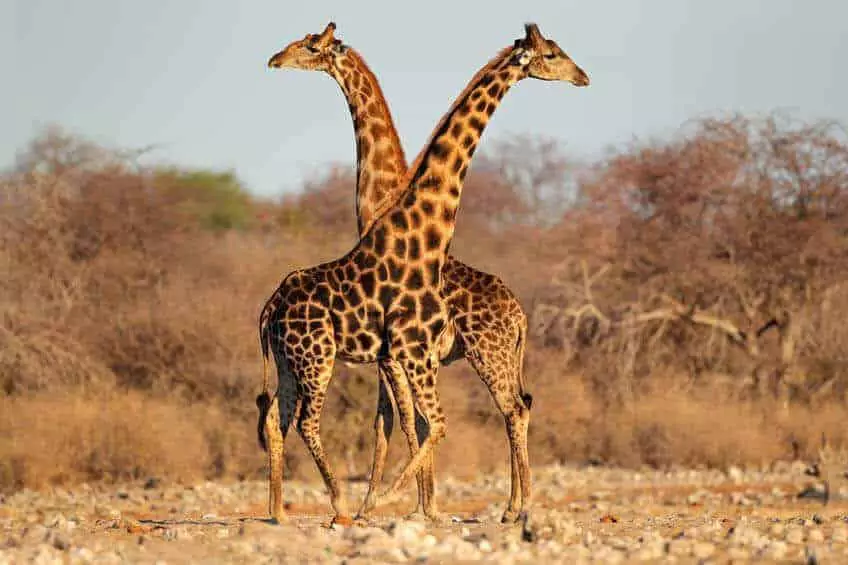
If you want to see animals native to the Namib Desert, such as oryx, springbok, kudu, zebra, giraffe, hartebeest, leopard, hyena, jackal, and fox. Your best bet is to visit the NamibRand Nature Reserve, which is a large conservation area with breathtaking scenery. And a low density of visitors. Southern Namibia is not a prime big-game region Wildlife in Namibia.
The herd of around 150 wild horses that live in the desert between Aus and Lüderitz is the only population of desert-dwelling wild horses in the world. Making it an interesting and unique wildlife attraction in the southern region of Namibia.
Caprivi Namibia
The Caprivi is a highly distinctive region in Namibia. It is characterized by an abundance of green trees and floodplains, as well as rivers that never run dry. Because of the remarkable confluence of rivers, it is shaped like a panhandle and connects Namibia to four other nations Wildlife in Namibia.
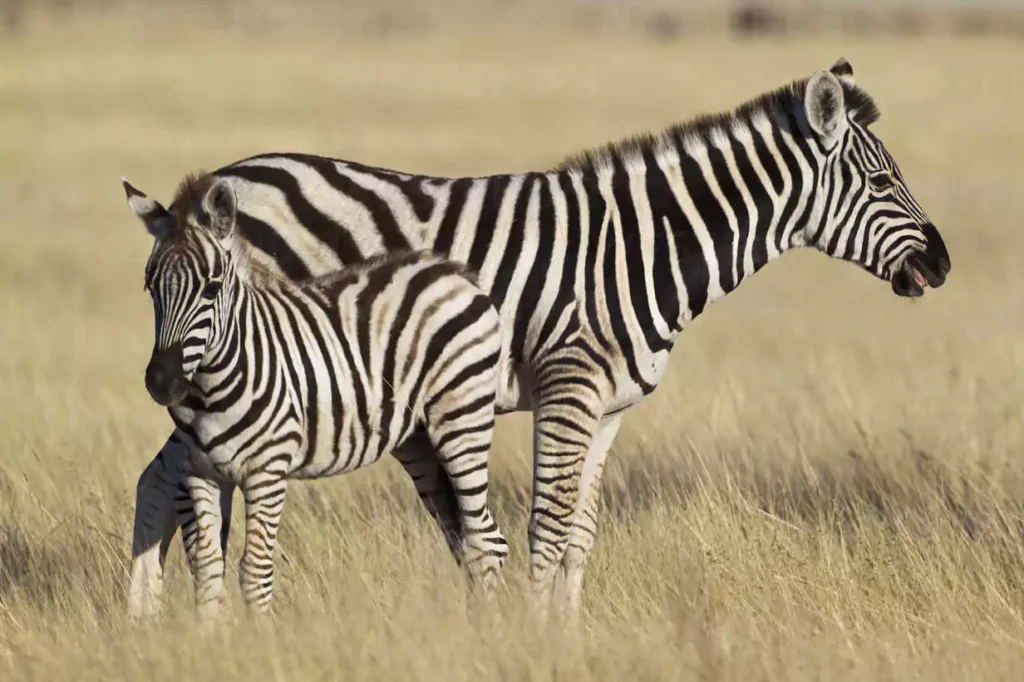
African Buffalo, Common Impala, Roan antelope, Red Lechwe, Puku, Tsessebe, Puku, Reedbuck, and Elephant are some of the creatures that can be found in this region. It is the only spot in Namibia where you will have the opportunity to witness hippos and crocodiles of the Nile. The area is home to a wide variety of birds. There are about 400 different types of birds that may be found in the forests and along the canals Wildlife in Namibia.
Endangered species in Namibia
Along the Chobe River in Botswana and in the Linyati marshes in Namibia. The puku antelope population is estimated to number no more than one hundred individuals. Poaching has had the most devastating effect on black and white rhinos Wildlife in Namibia.
\Who are now on the brink of extinction as a result? If there hadn’t been any attempt made to rescue them during the last 20 years. There is a good chance that they would have vanished entirely. Both of these species may be found in Namibia in their native environments. However, in many of the reserves, they have been reintroduced Wildlife in Namibia.
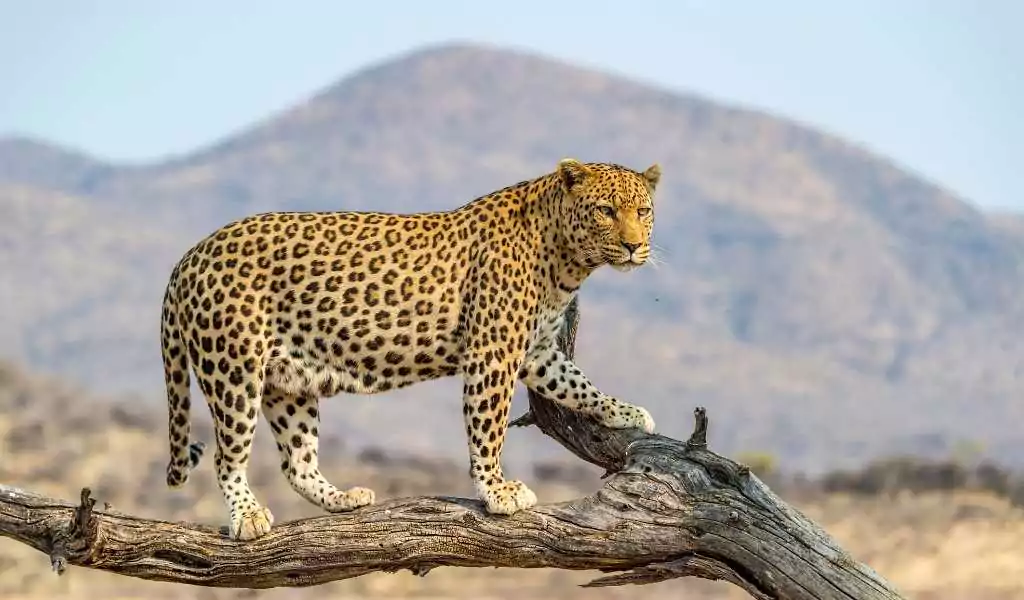
In addition, the country is home to the biggest population of free-ranging cheetahs in southern Africa. Which may be found outside of national parks. There are over twenty different species of antelope, ranging in size from the eland, which is the biggest Wildlife in Namibia.
It is to the Damara dik-dik, which is the smallest. The Namibian coat of arms prominently features the gemsbok. A stunning species of antelope known for its long, symmetrical horns and unusual black and white patterns. In addition, Namibia is home to a diverse population of tiny mammals. Such as the mongoose, jackal, honey badger, and antbear. All of which are solitary and nocturnal in their behavior.
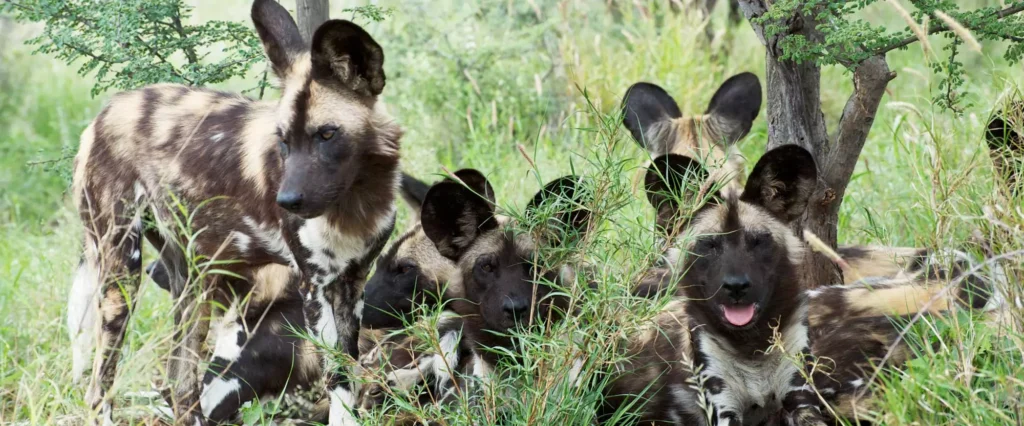
Wildlife in Namibia – some notable animals
Oryx
You can see an oryx with its long, thorny horns in the picture that is located above. Additionally, the oryx is Namibia’s mascot and national animal. Beautiful antelopes like these may be found all across the nation; in fact, they are known to freely wander the parks and greens of even the smallest of towns and villages Wildlife in Namibia.
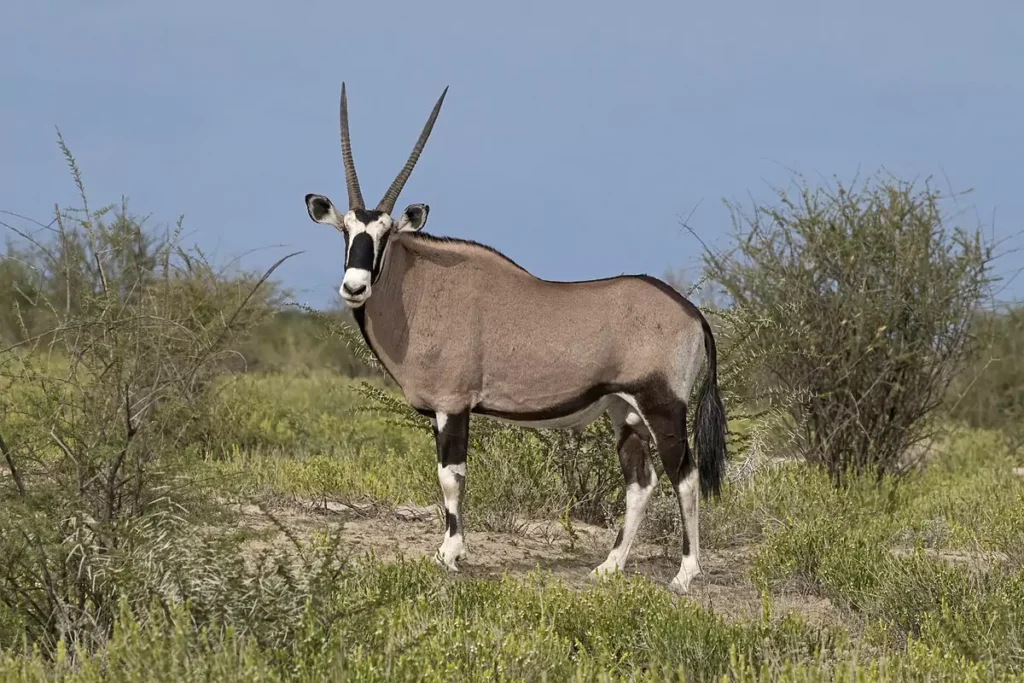 As a result of the fact that animals in Namibia are allowed to wander in many areas of the nation, even outside of the large game reserves, drivers in Namibia need to exercise extreme caution while they are out on the roads. The majority of roads consist of gravel or sand pistes. We have seen a lot of unusual road signs. But one of our favorites is this one that is located in Southern Namibia, close to the town of Oranjemund Wildlife in Namibia.
As a result of the fact that animals in Namibia are allowed to wander in many areas of the nation, even outside of the large game reserves, drivers in Namibia need to exercise extreme caution while they are out on the roads. The majority of roads consist of gravel or sand pistes. We have seen a lot of unusual road signs. But one of our favorites is this one that is located in Southern Namibia, close to the town of Oranjemund Wildlife in Namibia.
Kudus
Kudus are large antelopes that are distinguished by the spiraling patterns on their horns. The savannah is the natural habitat of these antelopes, and their diet consists of leaves and young shoots of plants. Kudus are rather reserved animals. When they sense that they are in danger, they will run away rather than put up a fight.
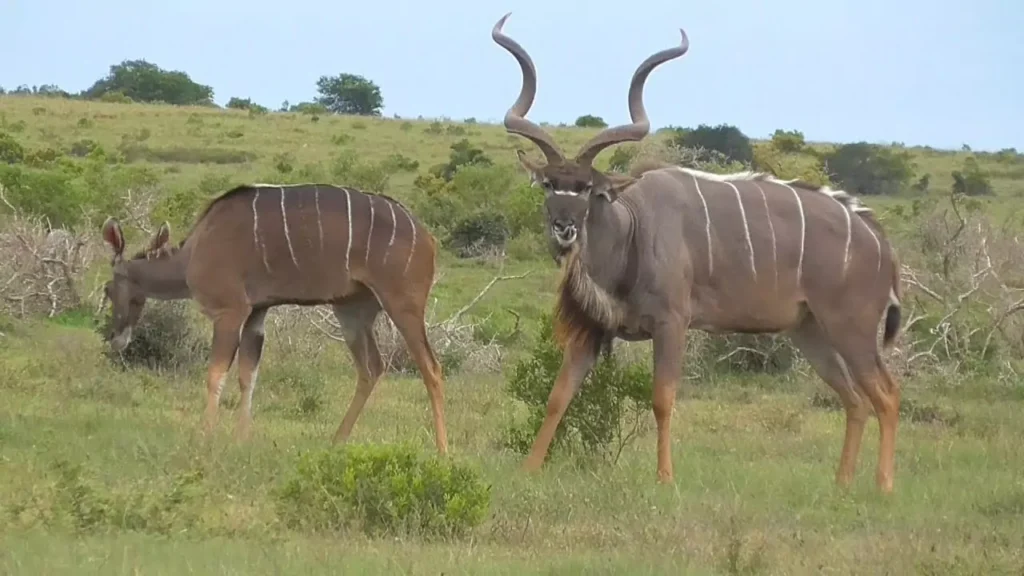
Springboks
Additionally, springboks are abundant and may be seen on each trip across the countryside. These animals are easy to see. This kind of antelope is not very tall. But it is simple to tell them apart thanks to their white bellies, and medium brown coats. And the white mark on the bases of their feet. The peculiar manner in which these creatures run and leap. Which gives them their name, and leads to the naming of the species Wildlife in Namibia.
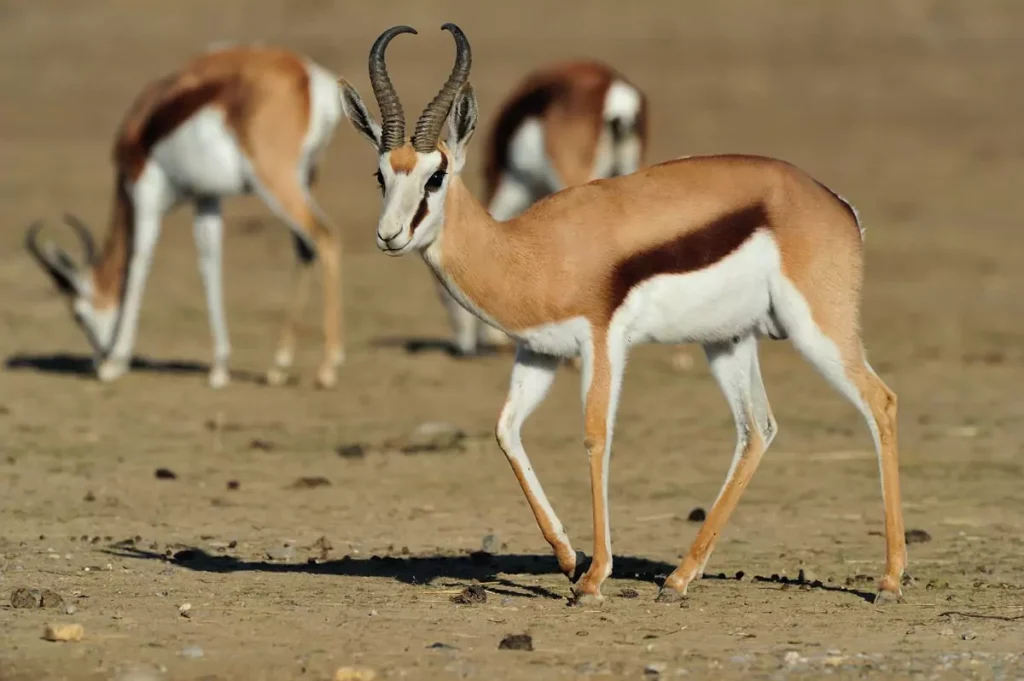
Elephants
The only place in Namibia outside of a national park where you could see an African elephant is Damaraland, which is a desert region in the northwestern part of the country. African elephants are mostly limited to the national parks in Namibia.
Did you know that African elephants may weigh up to three times as much as their Asian counterparts? The size of an elephant’s ear is another characteristic that helps differentiate an African elephant from an Asian elephant. The ears of African elephants are substantially larger than those of Asian elephants. Their form is virtually identical to that of the African continent Wildlife in Namibia.
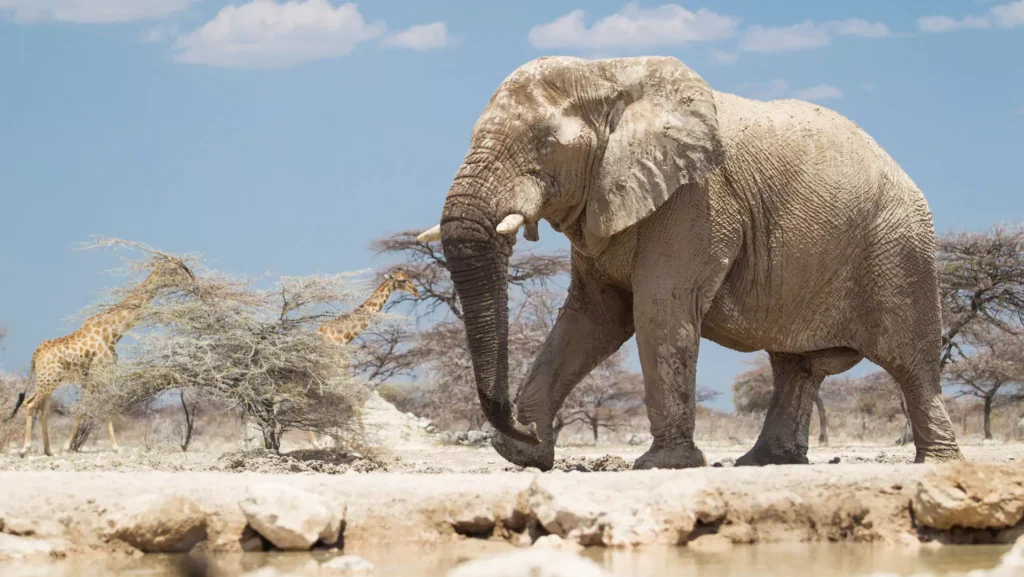
Rhinos
Unfortunately, rhinoceroses are still killed for their exquisite horns. Which has resulted in their extinction as a species. Do you know that there are also black rhinos in addition to white ones? They vary from one another in terms of size and behavior, but their coat colors are only slightly different from one another.
In comparison to other species of rhinoceros, white rhinos are seen as less threatening and even kind. In addition, you may recognize them by the distinct characteristics of their mouths. The black rhino has a more pointed mouth, which makes its horn seem even more menacing. In contrast, the white rhino has a more rounded mouth, giving it the appearance that it is constantly grinning Wildlife in Namibia.
